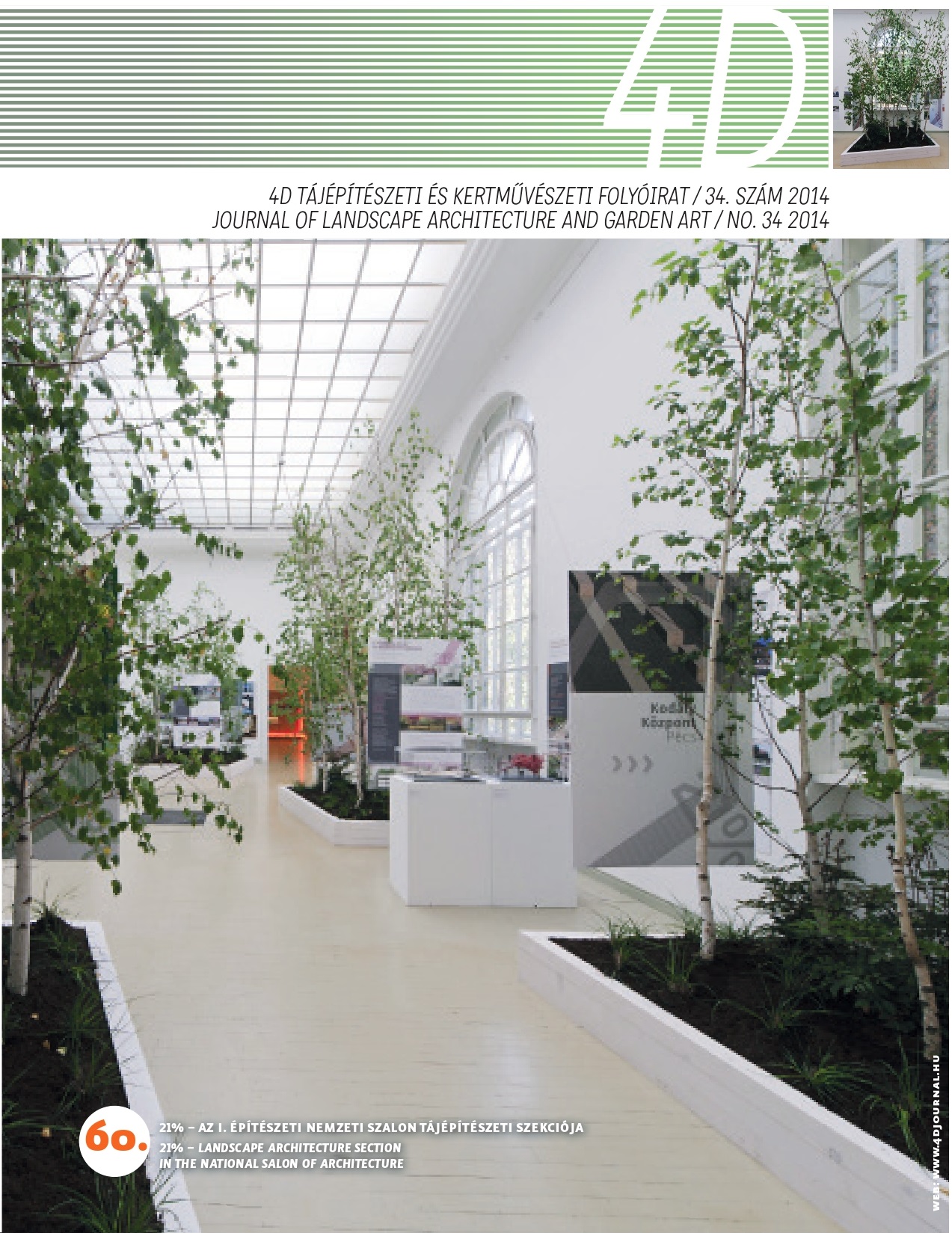The future of public parks in Europe; the role of landscape architecture in design and research
2. Public parks in Europe; use, performance and design
Keywords:
public parks, design, Europe, historyAbstract
This article is based on a presentation at a conference on urban parks organised by the Hungarian Academy of Sciences and the Faculty of Landscape Architecture of Corvinus University of Budapest in 2013. It’s the second part of a series of three articles that gives a broad overview of the design of urban public parks in a European context. This article focuses on use, performance and design of public parks in Europe, from the origins of public parks in the 18th century. The variety of use starts from the issue of health, at first technical in the form of sanitation services and later on physical exercise and the outdoors. After WWII public parks become 'public green space' with a diversity of functions, forms and distribution in the urban landscape. The recent rise of the service economies in Europe has brought new roles and uses to public space in general and to public parks in particular. The relation between research and design is a key element. ?ore research is needed especially for use and performance in the form of evidence-based research and post-occupancy evaluation.
References
Andela, G.: The public garden in The Netherlands. Journal of Garden History 1 (1981) 4 p. 367–392.
Andersson, Tj.: Erik Glemme and the Stockholm park system. In: Treib 1993. p. 114-134.
Bacon, E.N.: Design of cities. London, Thames and Hudson, 1974, rev. ed.
Bakay E., Szilágyi K., Hutter D.: The Evolution of Open Spaces and Green Surfaces on High-Density Developments since 1950. Acta Universitatis Sapientiae Agriculture and Environment. 3(Supplement) (2011) p. 298-309.
Barton, H.: Land use planning and health and well-being. Land Use Policy. 26 (2009) p. 115-123.
Burgess, J. & C.M. Harrison & M. Limb: People, parks and the urban green: a study of popular meanings and values for open space in the city. Urban Studies 25(1988) p. 455-473.
Chadwick, G.F.: The park and the town — Public landscape in the 19th and 20th century. London, The Architectural press, 1966.;
Chadych, D. & D. Leborgne : Atlas de Paris — Evolution d'un paysage urbain. Paris, Parigramma, 1999., Andersson, S.L. & M. Floryan & A. Lund: Great European gardens — An atlas of historic plans. Copenhagen, The Danish Architectural Press, 2005.
Chiesura, A.: The role of urban parks for the sustainable city. Landscape and Urban Planning. 68.(2004).p. 129-138.
Clark, P.: The European city and green space — London, Stockholm, Helsinki and St. Petersburg 1850-2000. Aldershot, Ashgate, 2006. p. 111-127.
Conway, H.: Everyday landscapes: public parks from 1930 to 2000. Garden History 28 (2000) 1 p. 117-134.
Devolder, A.-M. (ed.):The public garden — The enclosure and disclosure of the public garden. Rotterdam, AIR/NAi, 2002.
Jashemski, W.F.: From Vesuvius dust: Pompeii emerges a city of gardens, vineyards. Landscape Architecture 66 (1976) May, p. 224-230.
Downloads
Published
Issue
Section
License
Copyright (c) 2024 Martin Van Den Toorn

This work is licensed under a Creative Commons Attribution-NonCommercial-NoDerivatives 4.0 International License.
A folyóirat Open Access (Gold). Cikkeire a Creative Commons 4.0 standard licenc alábbi típusa vonatkozik: CC-BY-NC-ND-4.0. Ennek értelmében a mű szabadon másolható, terjeszthető, bemutatható és előadható, azonban nem használható fel kereskedelmi célokra (NC), továbbá nem módosítható és nem készíthető belőle átdolgozás, származékos mű (ND). A licenc alapján a szerző vagy a jogosult által meghatározott módon fel kell tüntetni a szerző nevét és a szerzői mű címét (BY).



